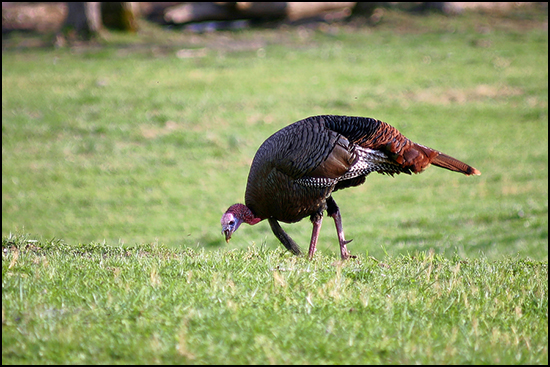Managing for wild turkey takes habitat enhancement, regulated hunting, and providing for all of their daily needs. Habitat must provide food, cover, water and space. One way to provide additional foods for turkey is through food plots. Just make sure you get started on the right foot. Think of it this way: For every successful garden you see, brimming with ripe vegetables, realize that the work started before the seeds went in the ground.
It’s no different for food plots, whether for white-tailed deer or wild turkey. You want to start with one of the most important components of a food plot, soil. Plan on evaluationg the soil before moving forward with developing your turkey food plot.
Why is a soil test a good idea? First, the test is simple and inexpensive. Soil sample kits are readily available from your county extension office or the Natural Resource Conservation Service (NRCS) office. They usually cost $10 or less. You can also find them online from private companies.
But not only is soil testing inexpensive, it can give you a precise prescription for the amount of lime and fertilizer necessary for good plant growth. What would be the purpose of taking the time to prepare and plant costly seeds if you weren’t sure the soil was prime for your food plot?
Fertilizer and lime do cost money, but you are better of doing your turkey plot right from the start. Lime allows the soil to reach the necessary pH level needed for your specific planting, and the timing of any lime application is critical. Liming is generally done at least one month before you plant your food plot so the soil’s pH level has time to change and reach the proper level. If your soil is not at the correct pH level when you start planting, your plants will not grow well, even with adequate fertilizer.
Soil Sampling for Food Plots
- Take your samples in the fall, as close to the time of planting that allows you to get the results back from the lab in time.
- Fill out the sheet that comes with the kit as best as possible. If you are not sure what they want, contact a local extension agent.
- Take a sample of the soil at plow depth, or at least six inches. You want to take at least five samples of soil for each five acres of field.
- Mix the five samples together and let them dry before sending them.
- Place one cup of dry soil in the provided container or a one-pint plastic bag.
- Label the bag with your name and number that references the field you took the sample from.
- Record the sample location on an aerial photo or sketch of the farm, and keep for your reference.
- Make sure the soil information sheet is placed in a separate first-class envelope attached to the sample. You should ship the sample per instructions from your county agent.
Lastly, avoid sampling areas near fences, eroded knolls, lime, sludge or manure piles, dead furrows or back furrows, animal droppings, low spots and rows where fertilizer has been banded. In general, do not sample any area of a field that varies widely from the rest of the field in color, fertility, slope, texture (sandy, clayey, etc.), drainage or productivity. Sample the atypical area separately if it is large enough to receive lime or fertilizer treatments differing from the rest of the field.
In closing, using the proper amounts of lime and fertilizer will improve plant growth and your turkey food plot to benefit turkey and all local wildlife. Plots can be an important turkey management technique and should be used as part of a comprehensive turkey habitat management plan.
